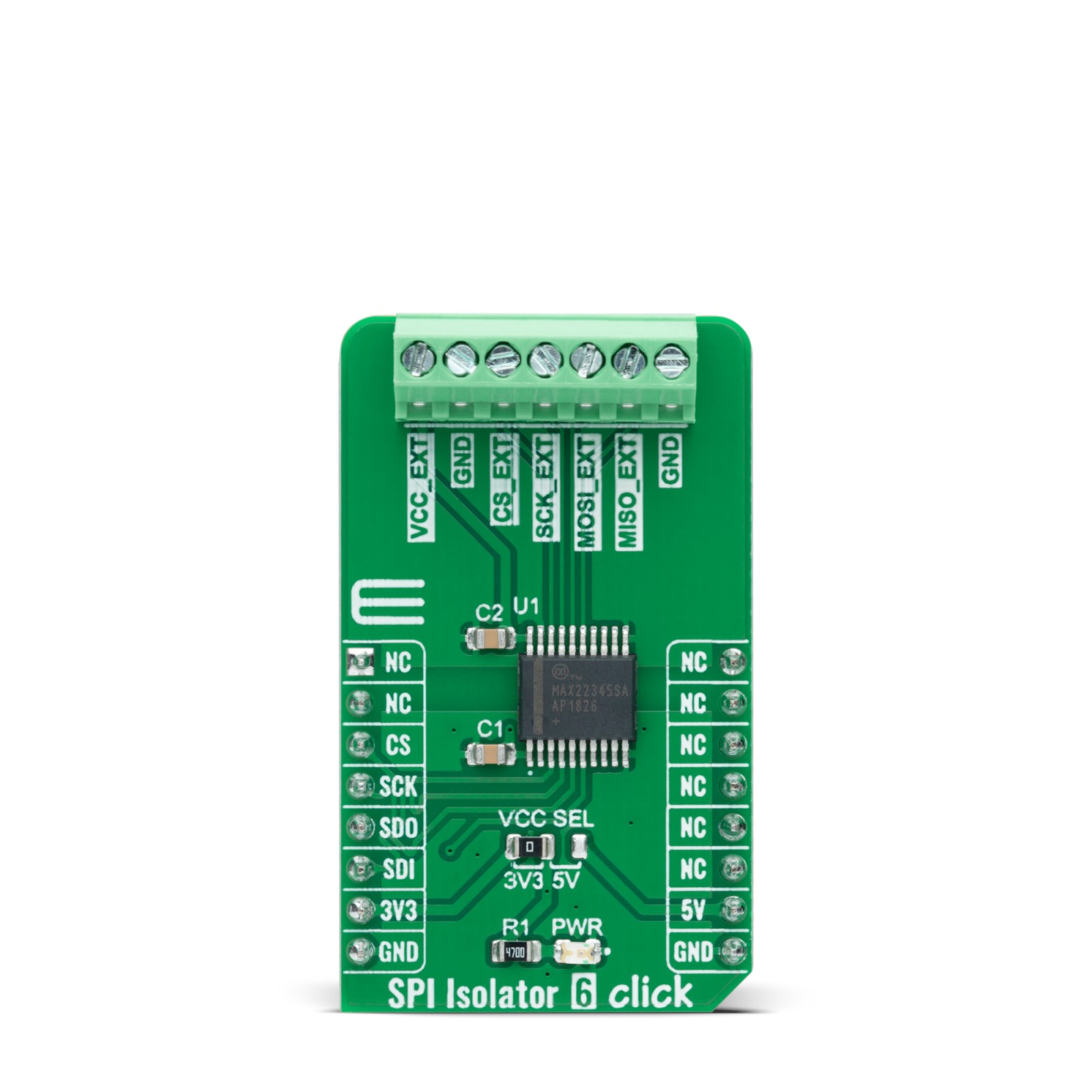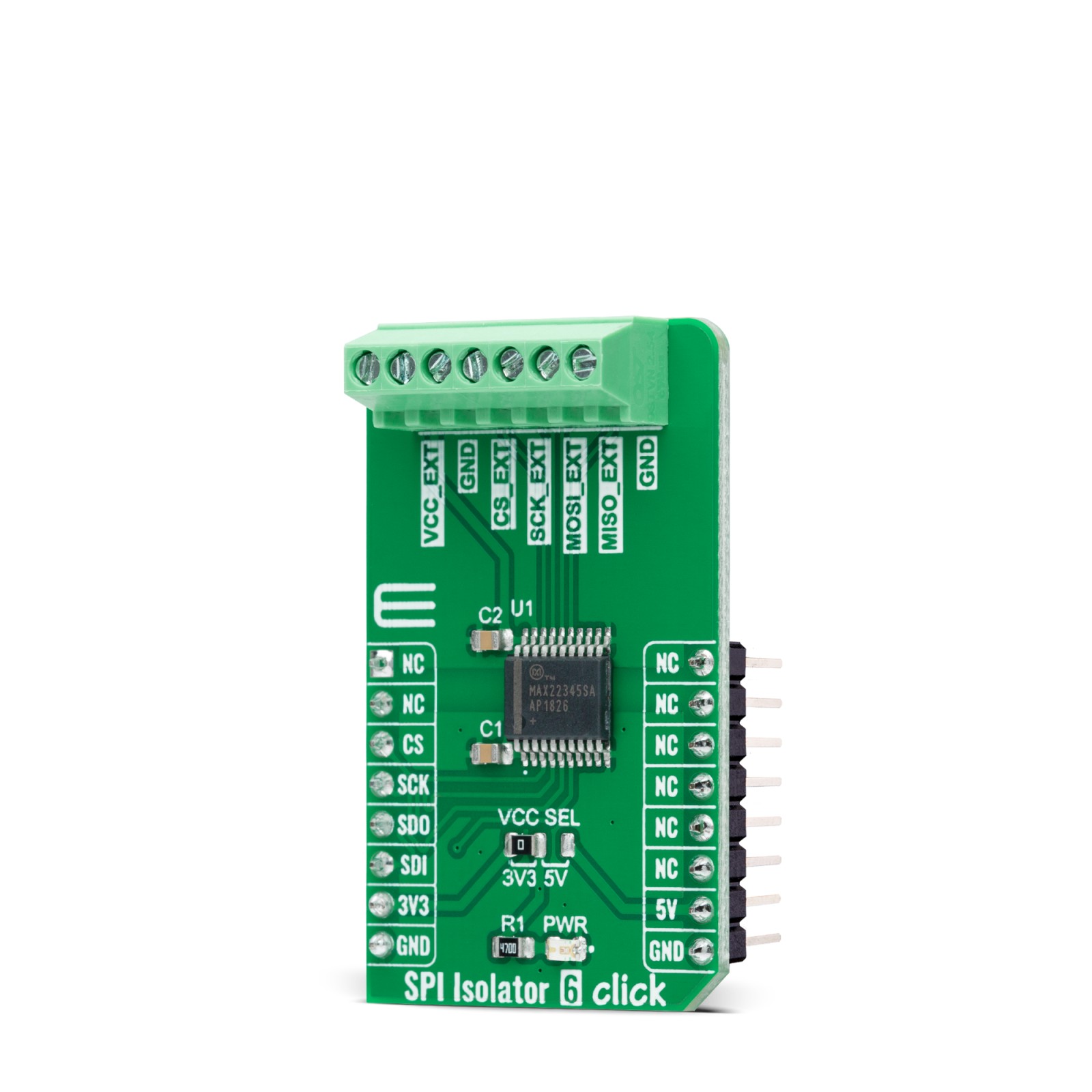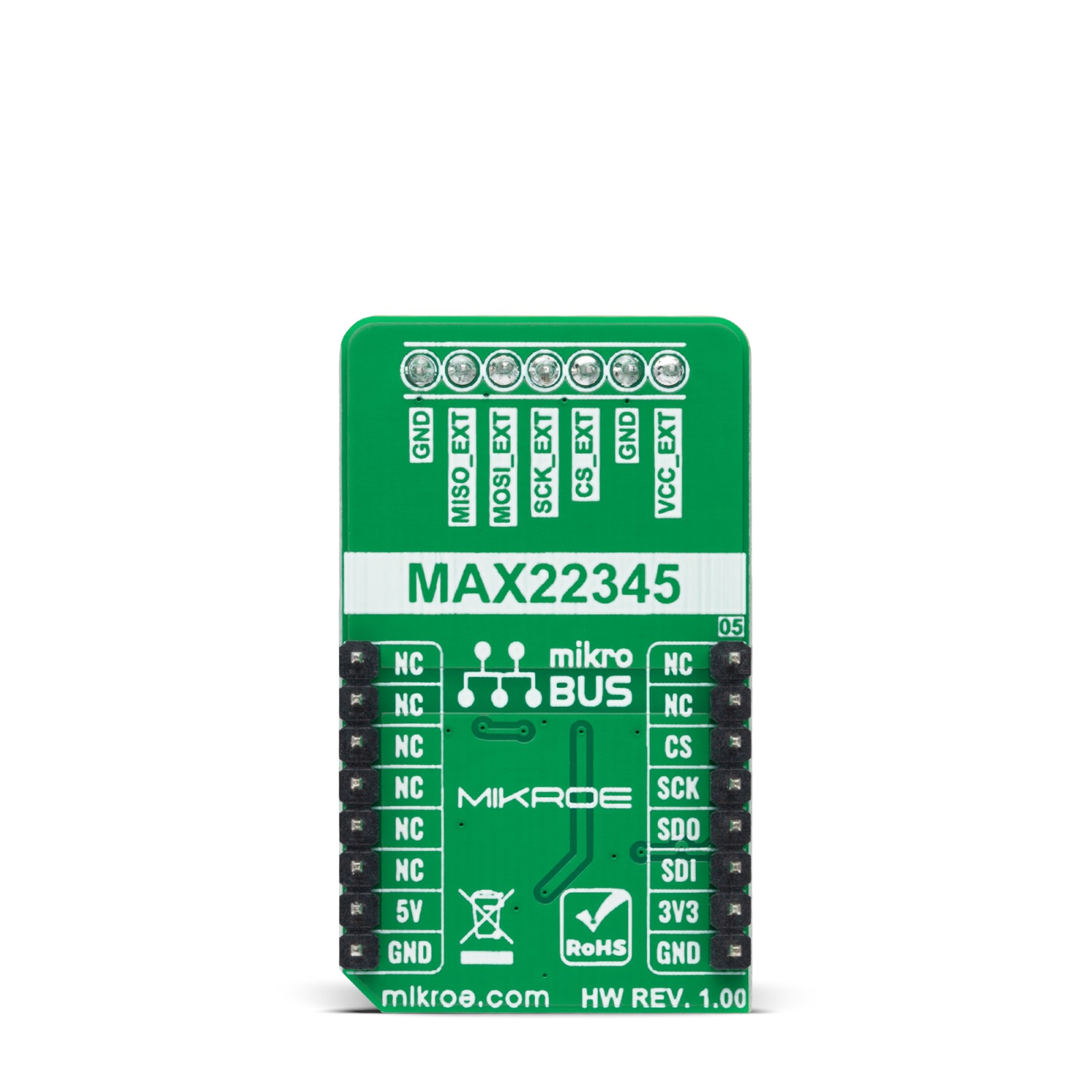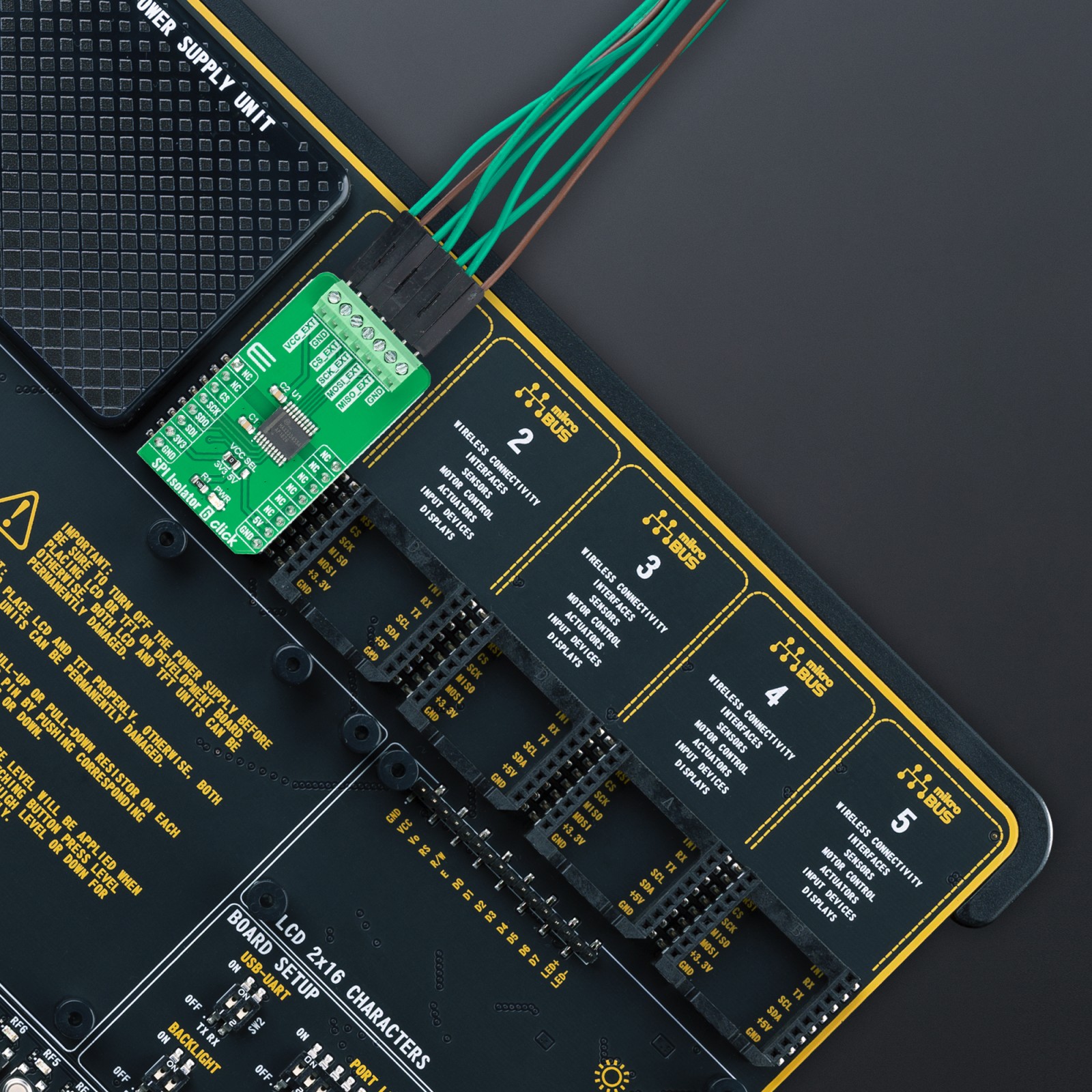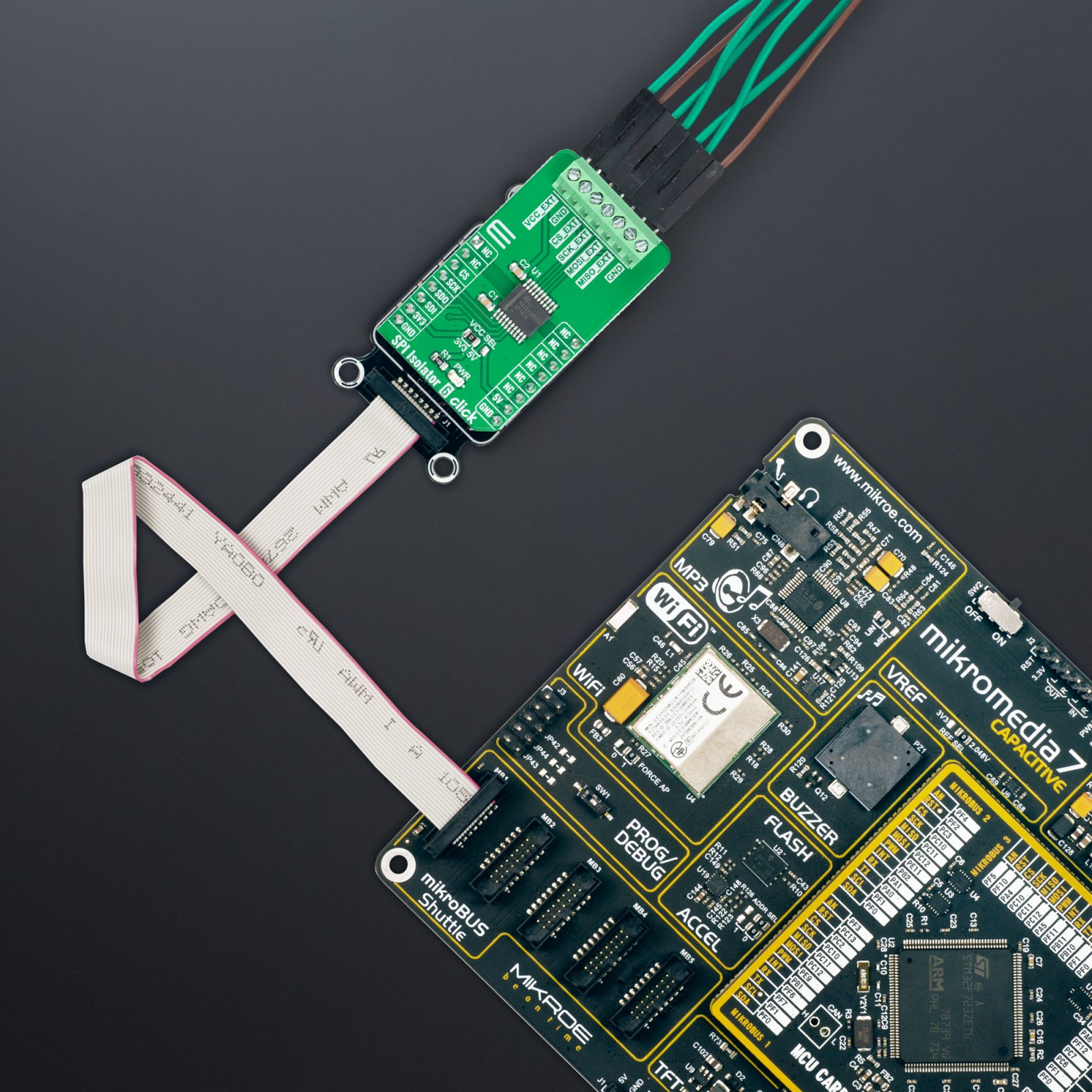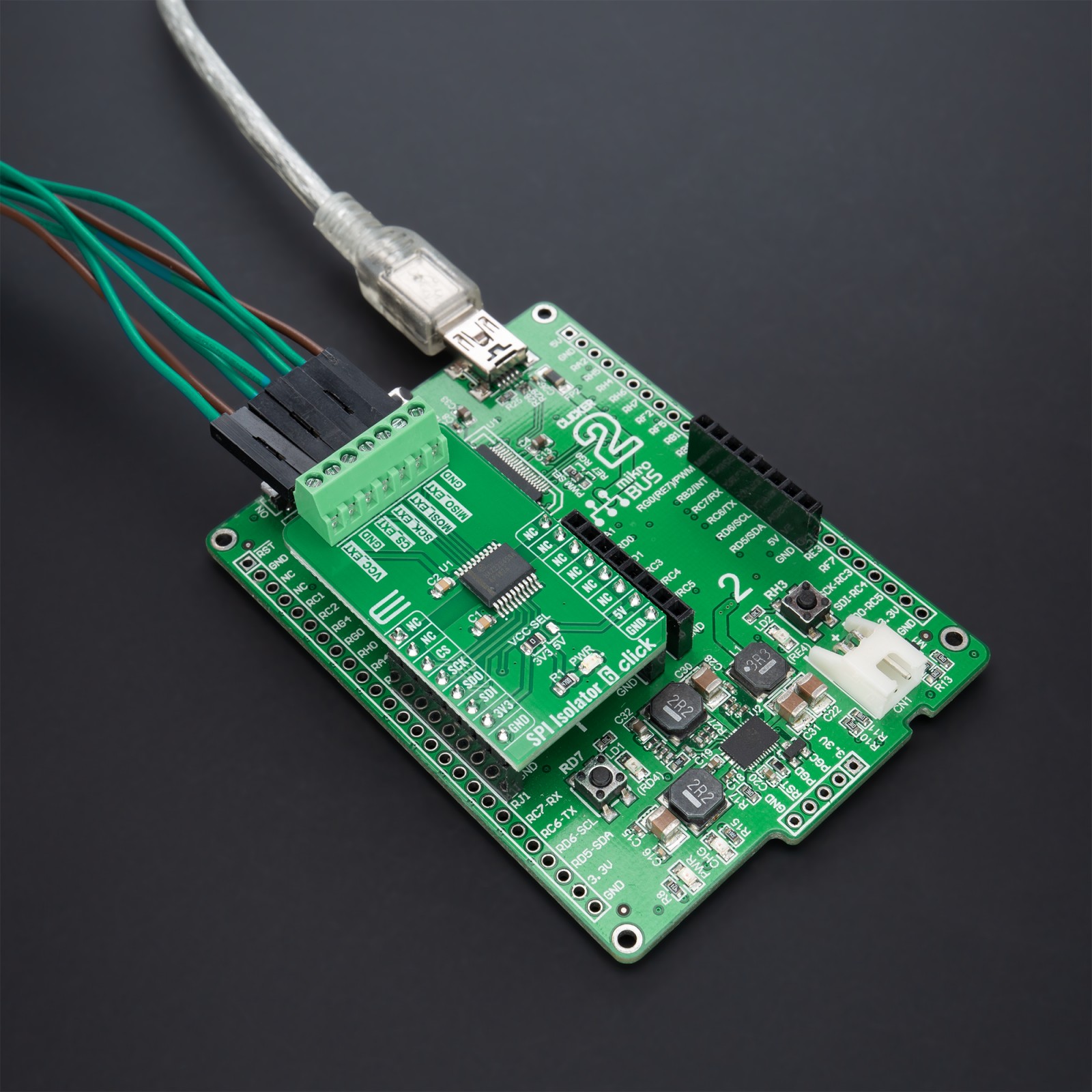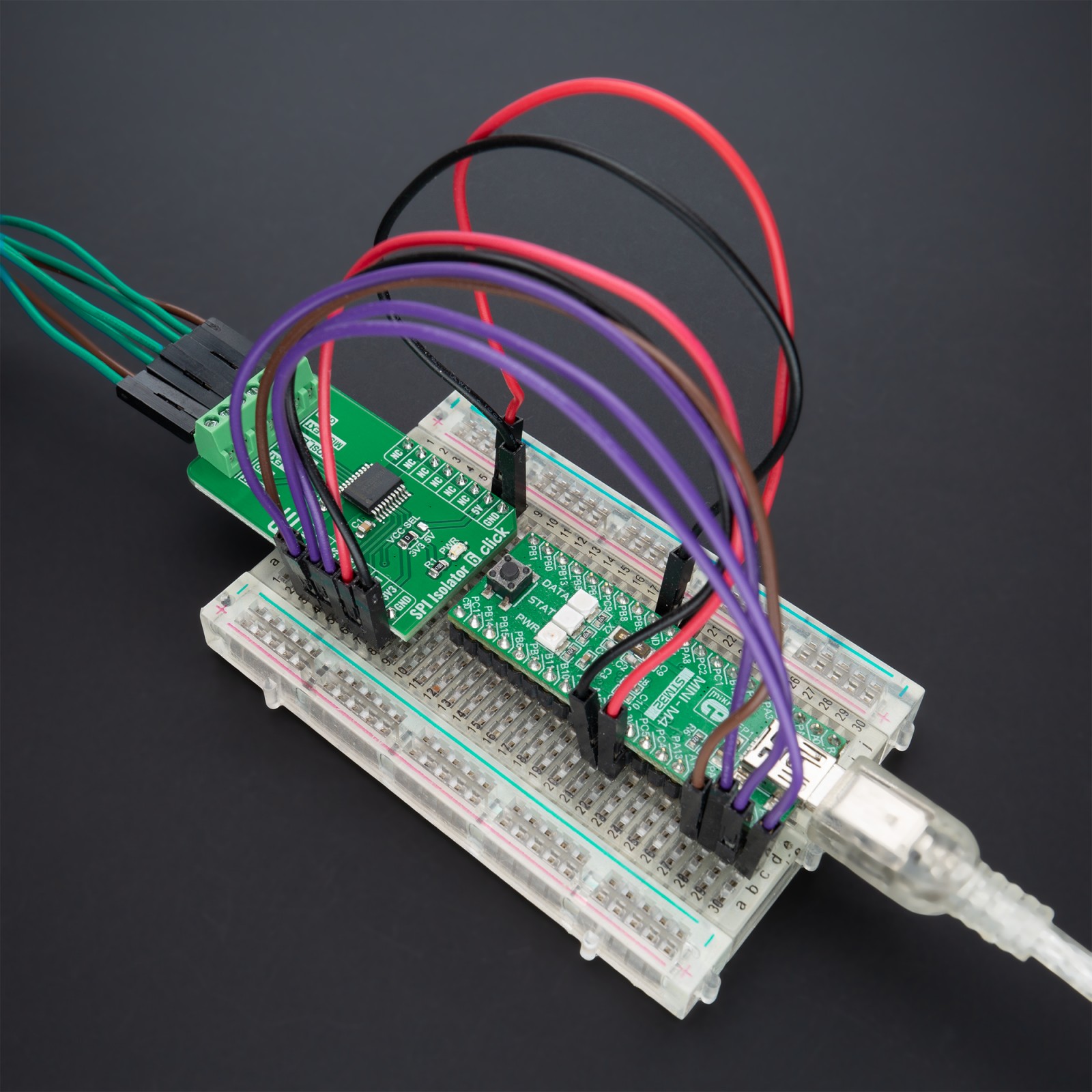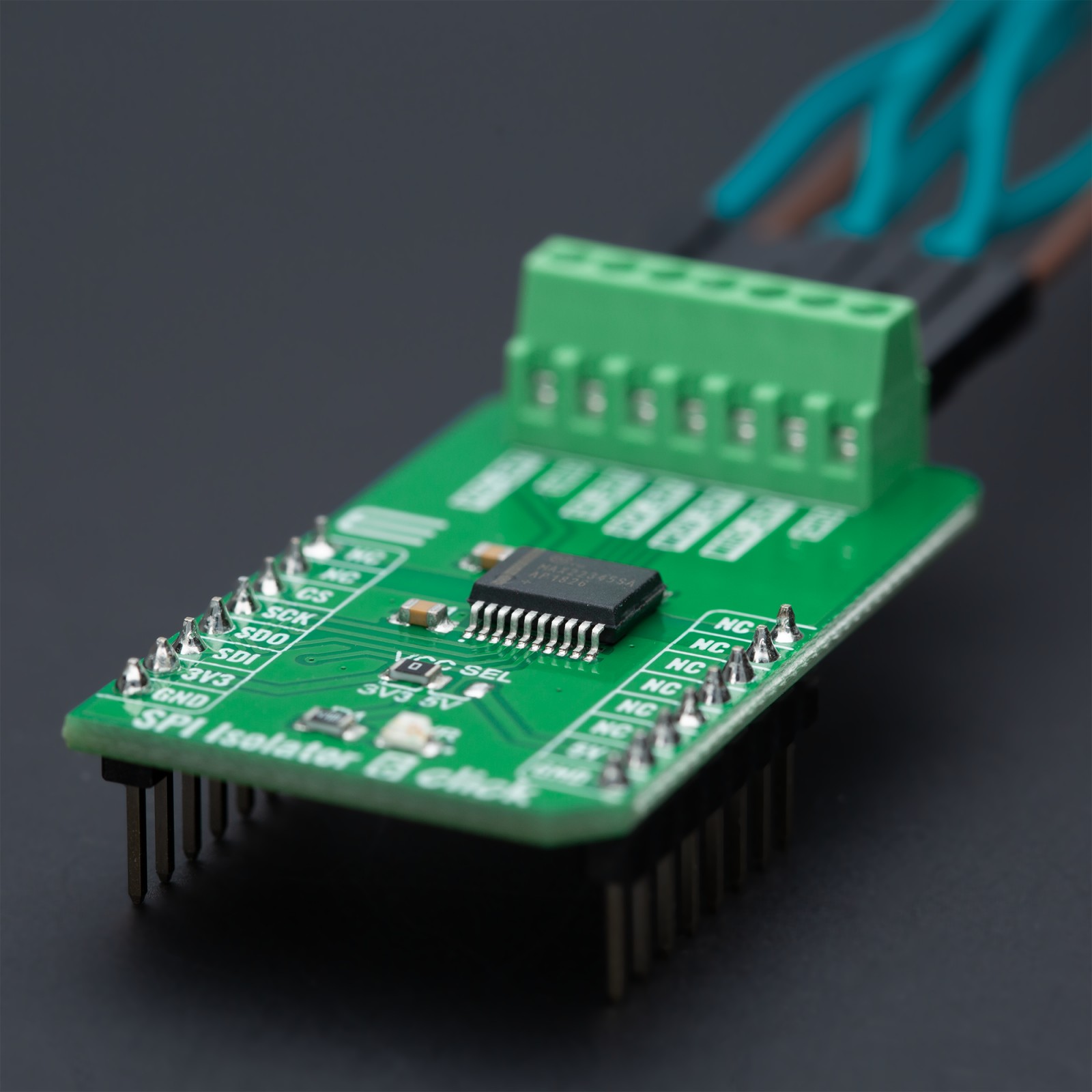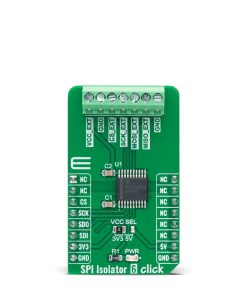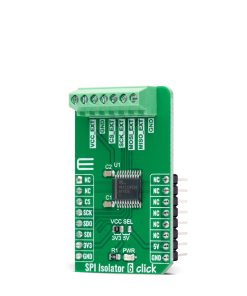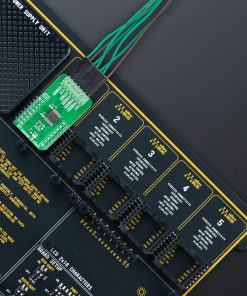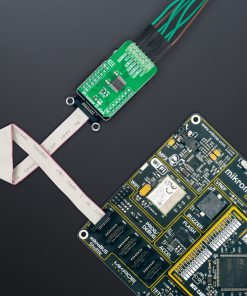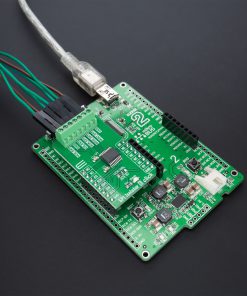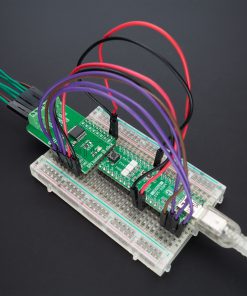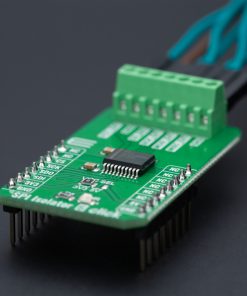Subtotal: R835.00
SPI Isolator 6 Click
R650.00 ex. VAT
SPI Isolator 6 Click is a compact add-on board representing a digital isolator optimized for a serial peripheral interface. This board features the MAX22345, a fast, low-power 4-channel digital galvanic isolator from Analog Devices. This device comes with a maximum data rate of 200Mbps and transfers digital signals between circuits with different power domains featuring reinforced isolation for a withstand voltage rating of 3.75kVRMS for 60 seconds. This Click board™ is suitable for general SPI-bus isolation, industrial, process and building automation, programmable logic controllers, and many more.
SPI Isolator 6 Click is supported by a mikroSDK compliant library, which includes functions that simplify software development. This Click board™ comes as a fully tested product, ready to be used on a system equipped with the mikroBUS™ socket.
Stock: Lead-time applicable.
| 5+ | R617.50 |
| 10+ | R585.00 |
| 15+ | R552.50 |
| 20+ | R531.70 |

 Alcohol 3 Click
Alcohol 3 Click  IR Click
IR Click 